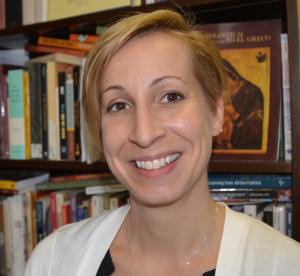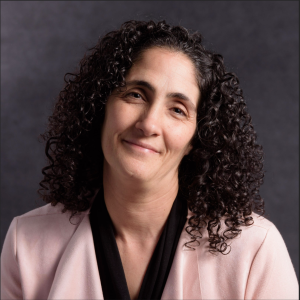Resources

I, like so many, have been flooded with a mixture of emotions during this pandemic and self-isolation. While feelings of fear and anxiety often overcome me, I also have a profound sense of gratitude. I am privileged to be able to take a step back and ask religious questions those deep questions of meaning and value–with fellow religious educators. It is from phone conversations in isolation that Dr. Kathleen O’Gorman and I came to wonder what is this emergent curriculum, or “curriculum of pandemic,” that has descended upon us all, teaching us? What might we learn and how we are we called to respond in meaningful, educative ways? The first place Kathleen and I thought to process this emergent curriculum was with our learning community, to learn from this pandemic with our students and alums. We invited a small group of about 10 people, all of whom were enthusiastic about this gathering, into a process of introspection and learning. It was apparent from our initial correspondence leading up to and during our first session that we all want to feel connected in some way right now. This affirmed for me the need not just for community, but to create an intentional learning community. I –we– longed for a “community of conversation”–to connect and make meaning together. For me, the calling to teach means both teaching and learning and this pandemic called my colleague and I to be more intentional about our praxis as teachers and learners together. Kathleen coined the titled for our virtual sessions “Pandemic Pandemonium.” There is no script or textbook that tells us what we can learn and how we should respond to this global crisis; therefore, we developed a framework of four sessions from which will flow a process of unpacking this curriculum of pandemic. Drawing inspiration from Kathleen’s gifts of music and aesthetics, we framed each one around a different song to evoke our affective sensibilities. In our first session, we set the context for our process of teaching and learning through the pandemic by listening to Sam Cooke sing “A Change Is Gonna Come” set to a video with still images of people standing up for their human rights across the world throughout different moments in history. In sharing our interpretations and insights from this video and song, we discussed how we might connect these historical movements for change to the change emerging before us right now. What change do we want to see from this experience of sheltering in place, from teaching in learning through new modes and mediums, and from recognition the earth is healing itself while we remain still? We concluded that first session by observing how each movement for change in society was a movement towards deeper inclusion. How, then, is this curriculum of pandemic guiding us towards greater inclusivity? This set the tone for our next session, “Go to your room” (something Mother Earth seems to be telling us right now), and the introspection on our feelings and emotions as we withdraw from everyday life. Following John Lennon’s song, “Isolation,” we invited our group to start thinking about how this time away has opened new patterns of living. How have our feelings given rise to new ways of thinking and experiencing the world and how might we help others (those we serve, family, friends) discern the meaning and value of isolation as we are experiencing it? Our third session will reimagine how we “Come Together” (using the Beatles cover song by Gary Clark Jr.), by asking: What now? What is the meaning of all this? What are we learning from gathering in new ways and how does that inform and transform our praxis as religious educators; how does this change in patterns of living call us to rethink our curriculum and praxis towards greater inclusivity? In our final session, we curated a curriculum of closure to be the start of a new beginning. With help from The Beatles again, “Let it Be,” we reflect the meaning of Sabbath during this time as we ask what is Mother Earth telling us? How are we called by Mother Earth to Let it Be? We end our session with a pastoral plan informed by what we learned and how we are called to respond. I hope to return to these reflections as our process unfolds in the coming weeks. In the meantime, I am sharing this experience in developing a process curriculum to invite others, if you have not already begun to do so, to engage in a process of introspection and discernment with your learning community to uncover how your teaching and learning can respond to a curriculum of pandemic.

At first blush, the rest of the world’s shift to virtual learning in March seemed immaterial to our constituents who are in a heavily online MA in Jewish Education. We are lucky to boast well-trained and experienced online faculty and, perhaps even more important, students who are whizzes with Zoom, Schoology, and an array of online educational tools. Our people are at home in their virtual academic community. They already knew to mute themselves when not speaking in a teleconference, so we were really ahead of the game! Honestly, we felt immune to the whiplash others were experiencing with the very abrupt shift to online teaching and learning. And yet, ‘business as usual’ has been very UNusual. As a parent of three myself, I was quick to recognize the double demands that would be placed on working parents. This affects both our faculty and student body, many of whom are caring for young children and/or aging parents while working full-time in Jewish education. With childcare centers closed and many dual-career families trying to work remotely, this complexity appeared on our radar quickly. A few weeks after moving all courses online, we announced that Hebrew College would not be holding an in-person graduation in June. Especially for distance students, who cannot wait to finally bring their families to campus, hug their classmates and teachers, and wear a cap and gown to symbolize all that they have invested in their degrees, this was a huge blow. And now, we have gone from a trickle to a steadier flow of job losses, furloughs, and professional uncertainty. For the soon-to-be-graduates, many have gone from looking at the many pathways forward for their careers to worrying about their next paycheck in their current role. Even though our students are well-versed in learning online and forging and maintaining deep relationships over Zoom and FaceTime, this experience has been difficult. And so, I imagine for those faculty and students for whom virtual learning is new, and are experiencing the same stressors and uncertainties as I’ve described, this experience is multi-layered and fraught. With that in mind, I’d like to share my approach to graduate education, which builds on what I’ve learned over a decade-plus teaching virtually and adapts it for the moment at hand. • Focus first on the ‘extracurricular.’ With so much uncertainty and added stress in their personal and professional lives, students need to use the reflective space of the classroom to process their experiences—and to channel them into future material for growth. To my mind, this now trumps any other course objective. Once grounded and feeling seen (and this must happen repeatedly throughout the crisis), students will have greater capacity to engage in the material and hopefully reach many of the original course objectives. Do this by creating distinct spaces and times for processing and opportunities to grieve for whatever feels lost—this may be one-to-ones with faculty, a discussion board set aside for this purpose only, and/or facilitated/recurring peer conversations. These multiple entries allow for all types of processing so that students can find their comfort zone. • Uncoverage over coverage. Given time lost in the shift to online learning, and significant class time invested in shoring students up by reinvesting in relationships and care, it seems impossible that everything can still be covered. Though I toyed with it briefly, I shied away from upping the expectations of time for my course this spring in recognition of the physical and emotional work so many students were balancing on the home front. So, I focus on uncoverage rather than coverage. What happens when we let go of covering every thinker in a time period? Does it allow us to delve more deeply into one theologian? Or perhaps explore a single theme across many generations of thinkers? Allowing students the space to unpack (or uncover) texts, analyze them critically, and relate them to what’s happening in their lives today may make for better integration and assimilation of the material in the end. • Expect less, but give more. Where you can, lighten the reading load by removing a non-essential reading, mark one or more tangential sessions optional, and let students know that you will approach their work with an especially generous heart this semester. This is not meant to suggest compromising our academic standards, but to adjust them in places where flexibility exists. Recognize that students may have less to give academically but at the same time need more mentorship, empathy, and care—and try to navigate your own personal-professional juggle to accommodate those needs. To me, this is the most important thing I will ever teach my students. As teachers of theology, religion, religious education and thought, we have an added responsibility—and privilege—to create caring communities that recognize the holistic nature of our students’ lives. I am always mindful that when I teach these students, who are themselves the shapers of young Jewish hearts and minds, I am modeling both a pedagogical and ethical approach to creating a classroom community—be it ‘real’ or really virtual.